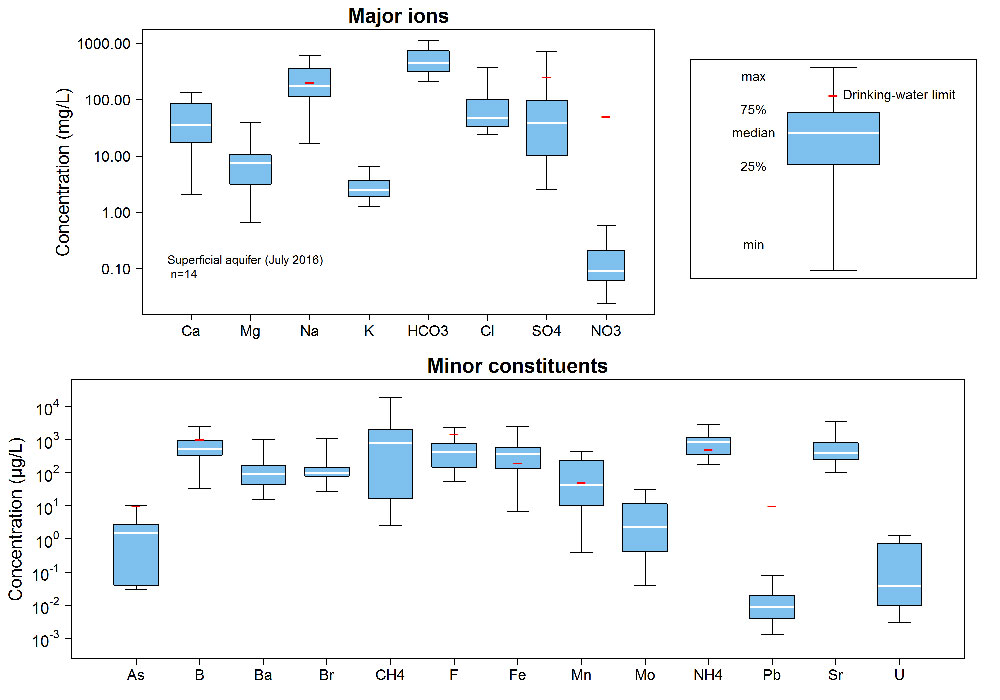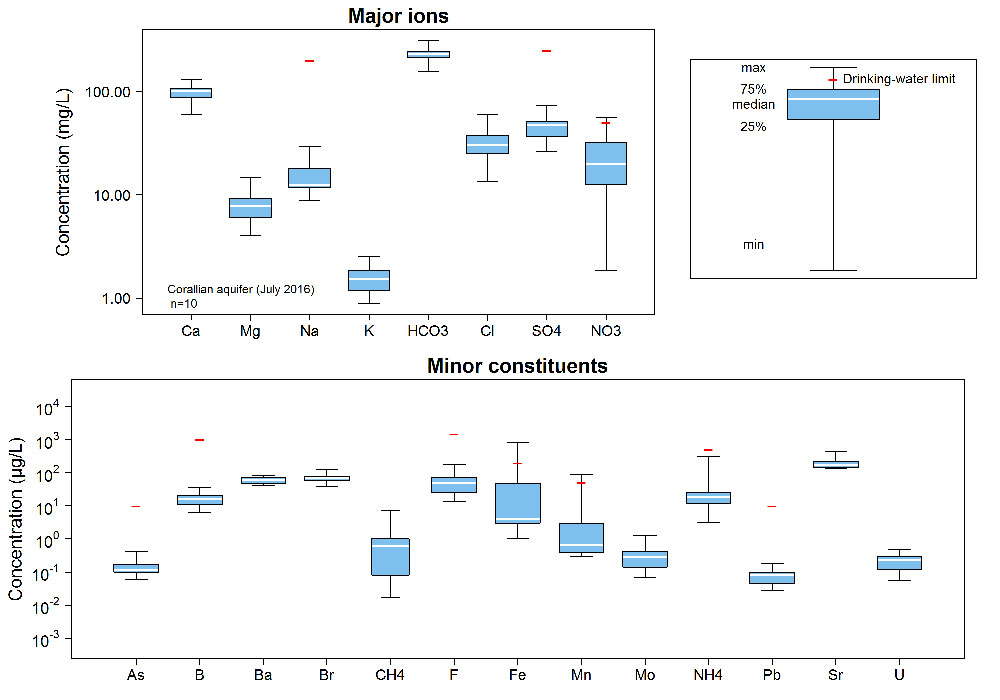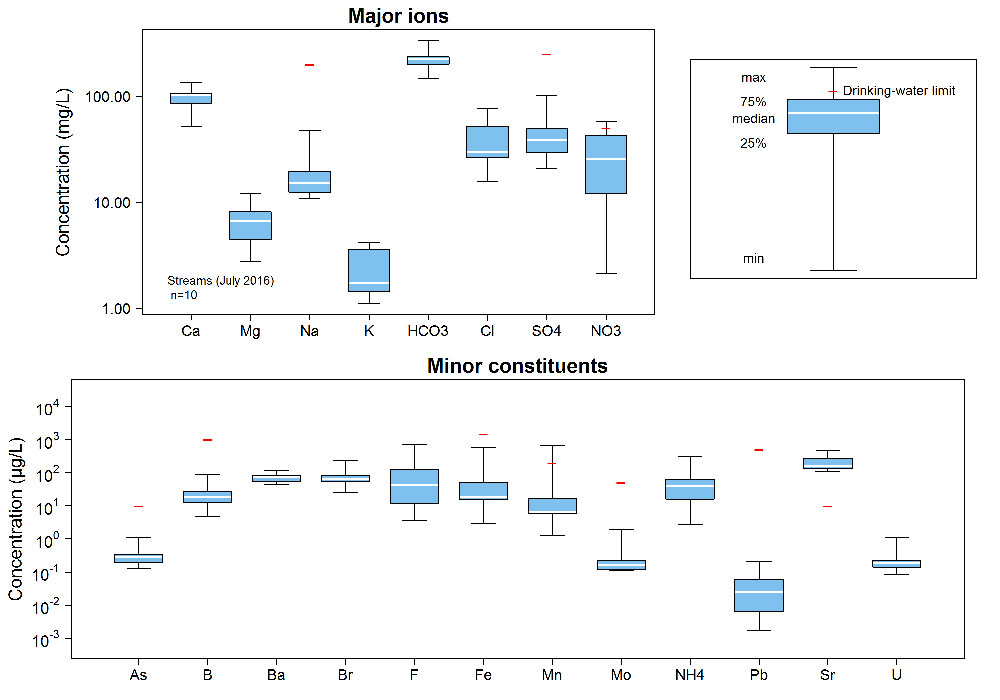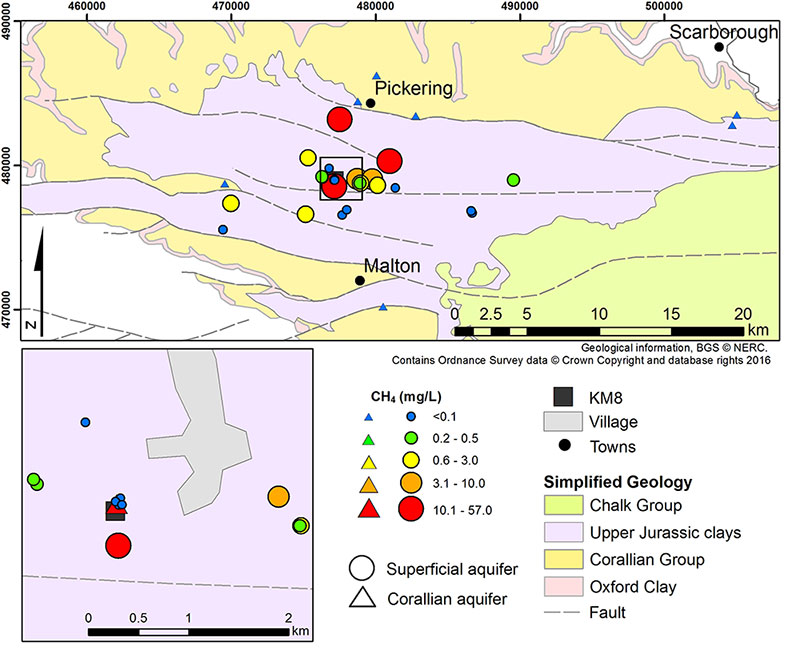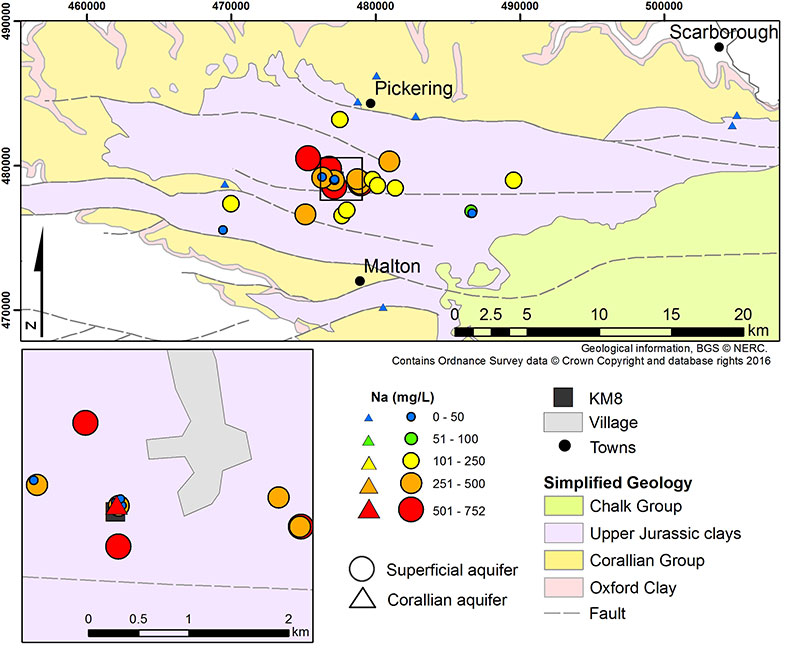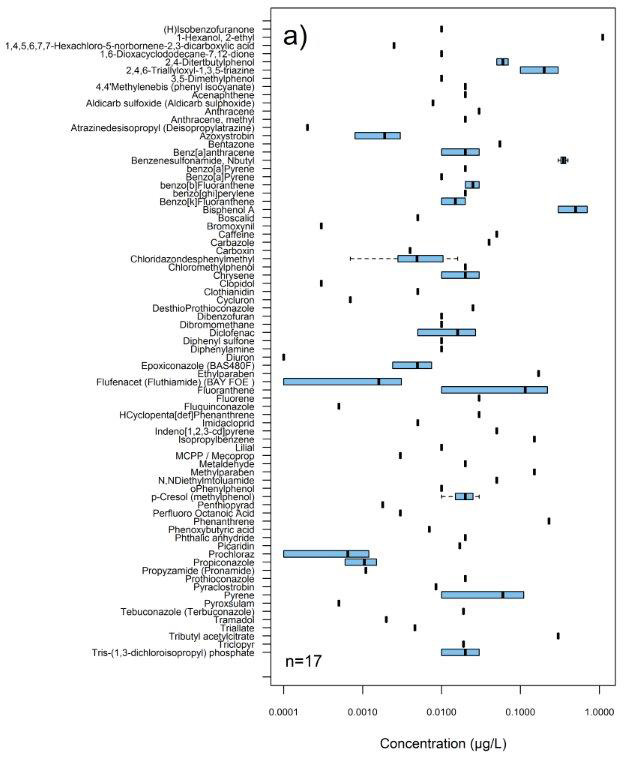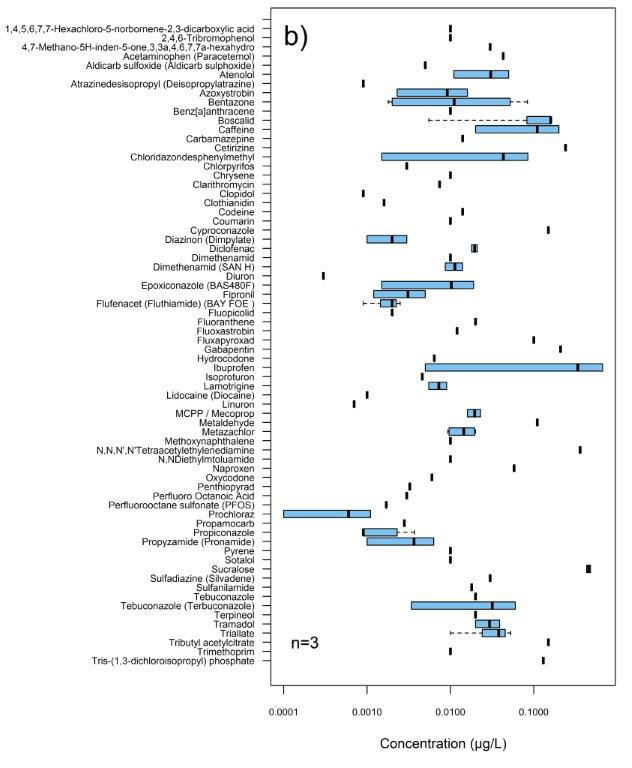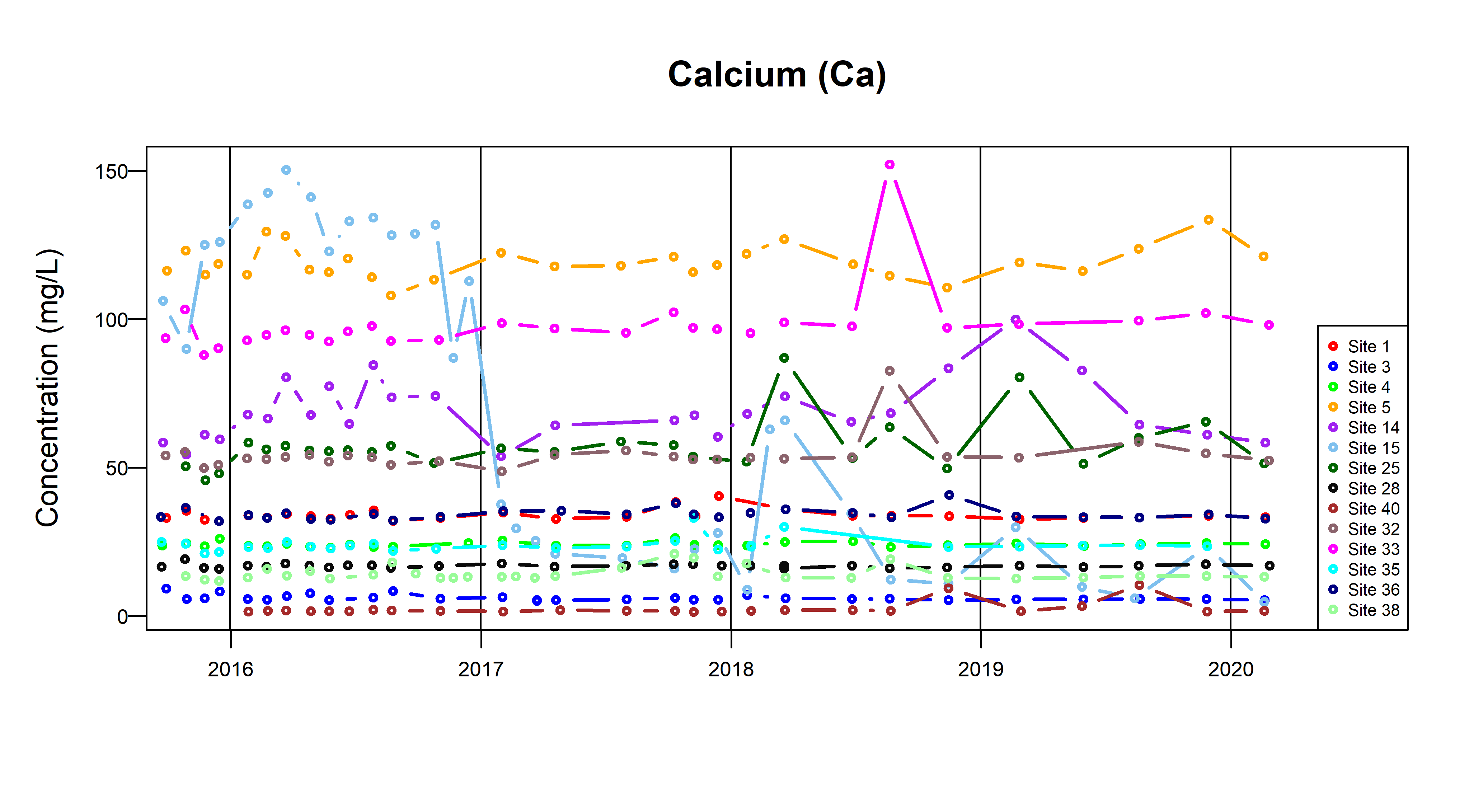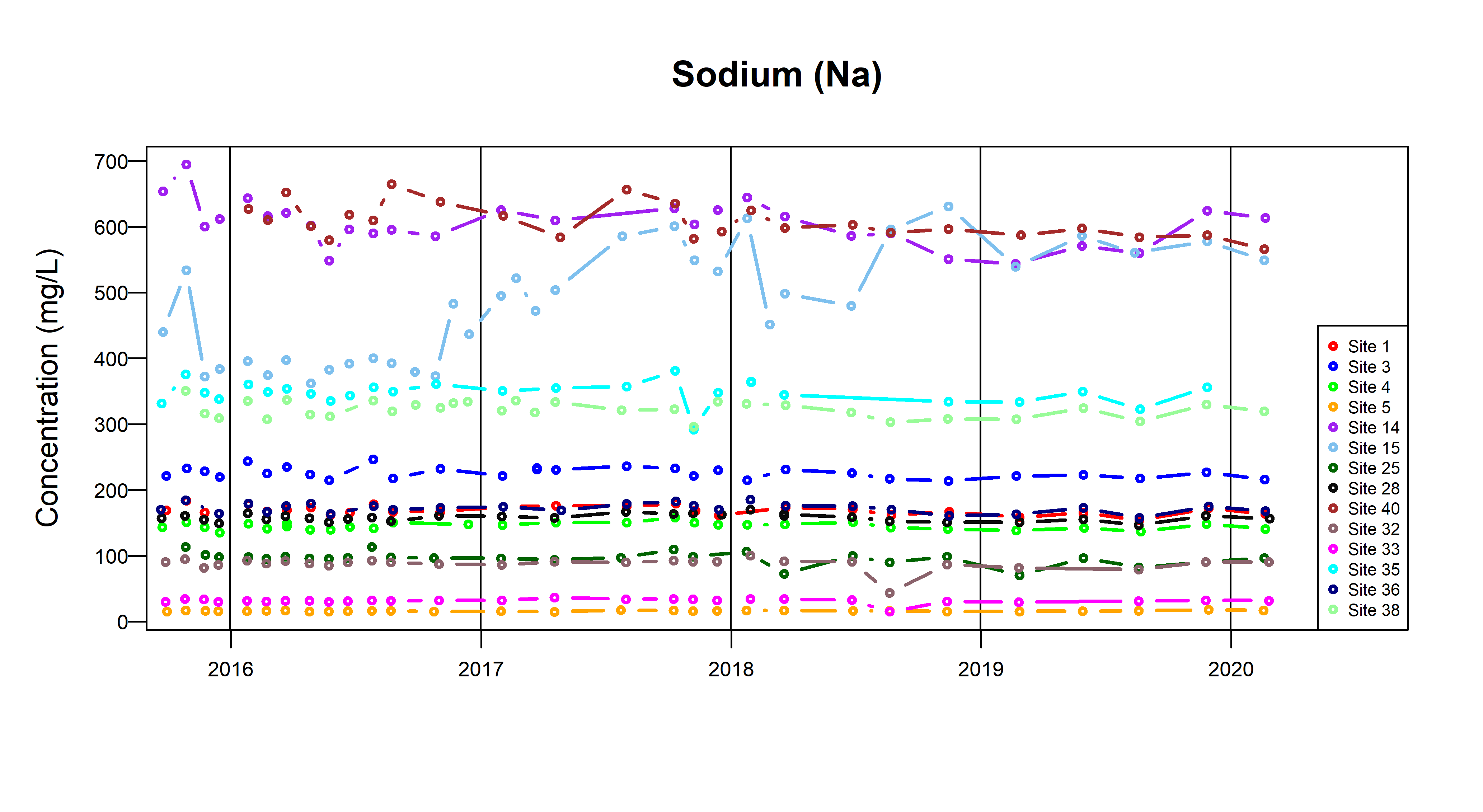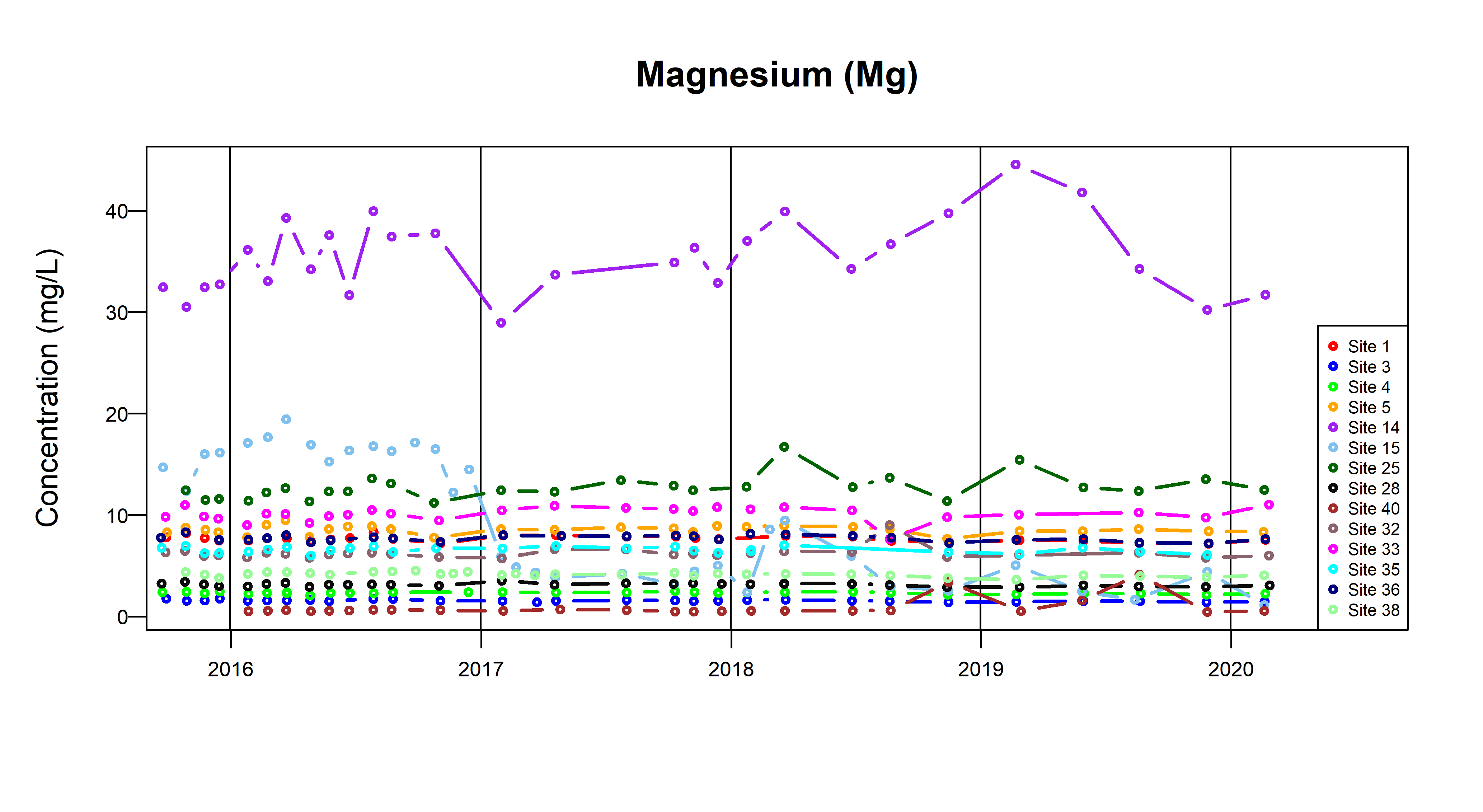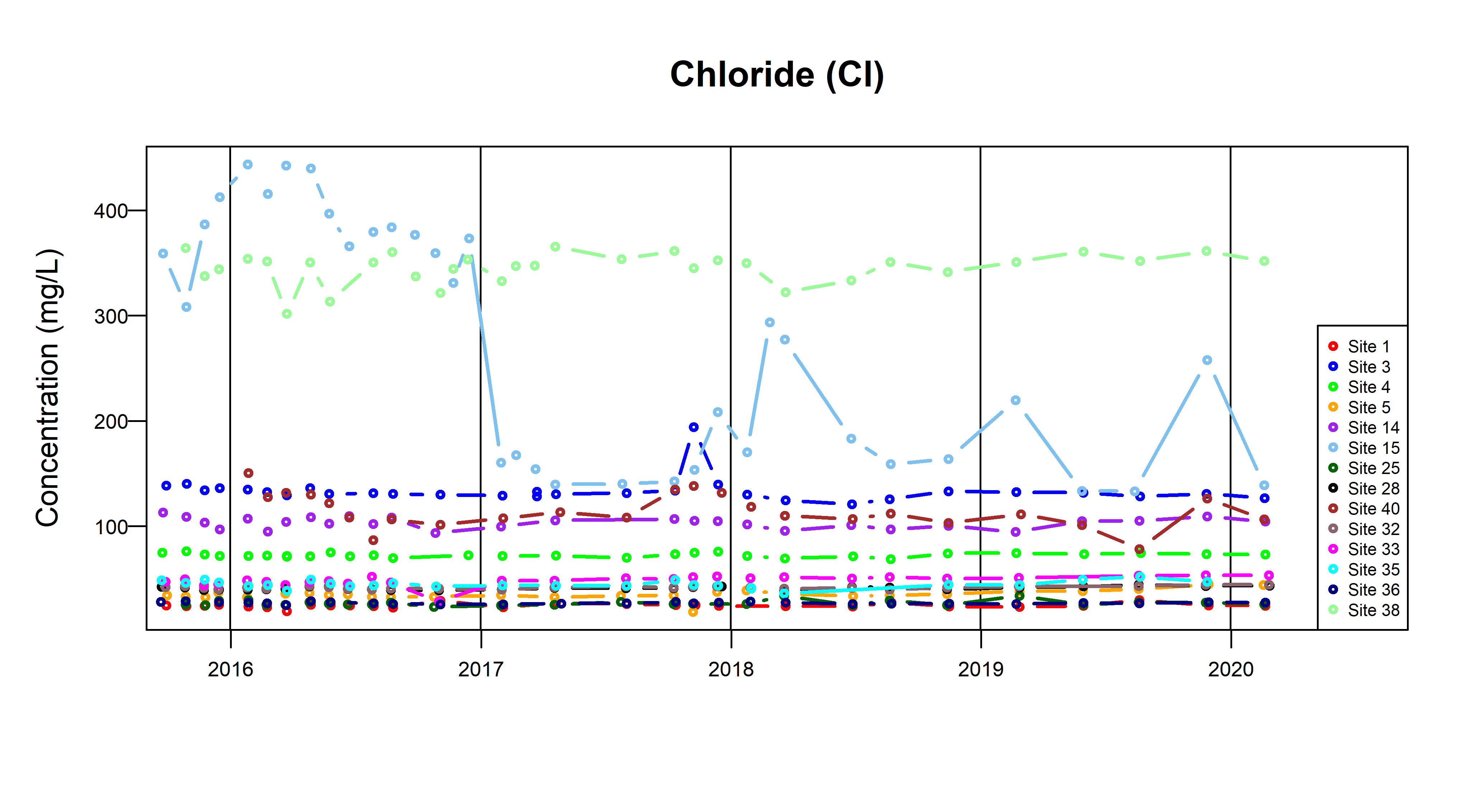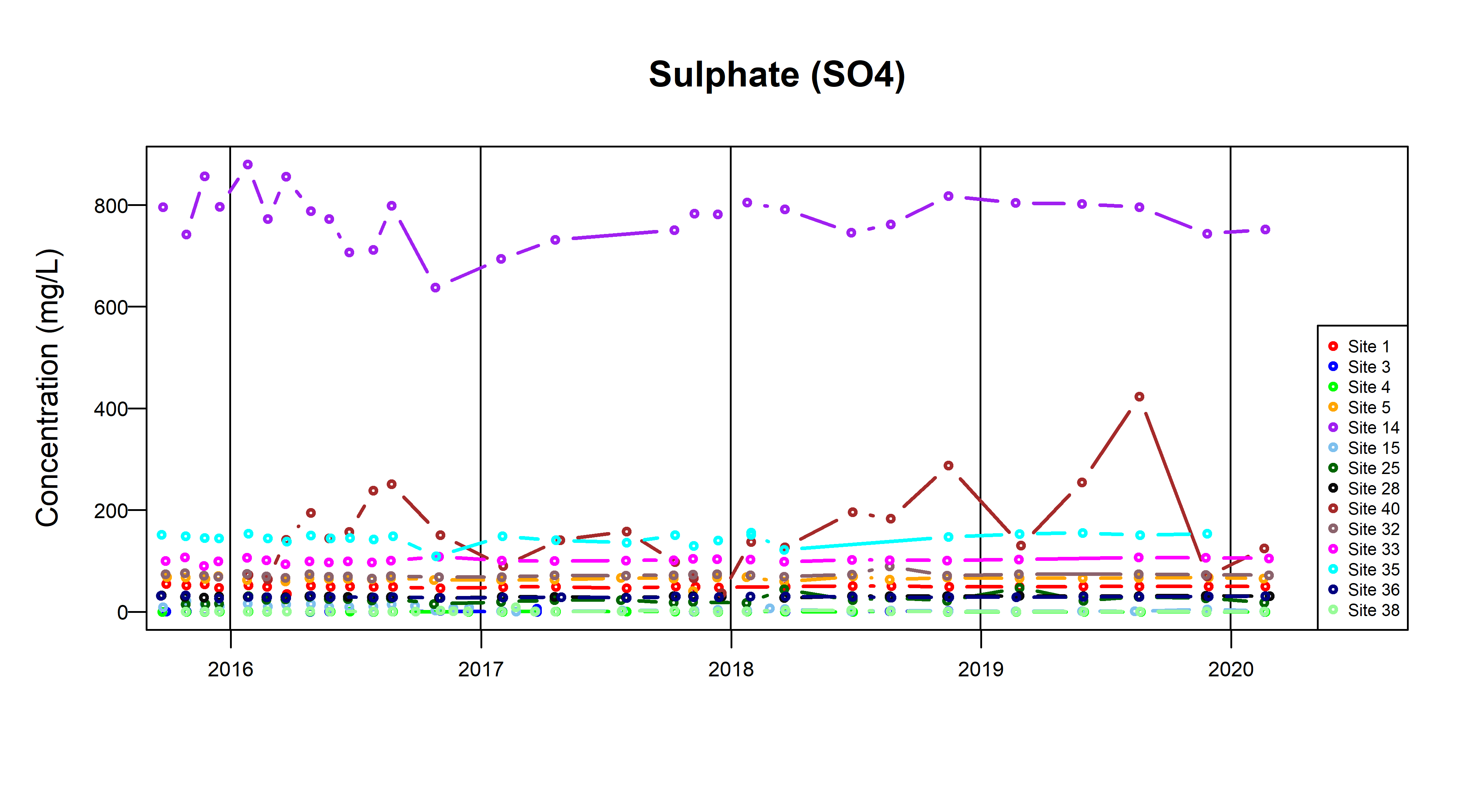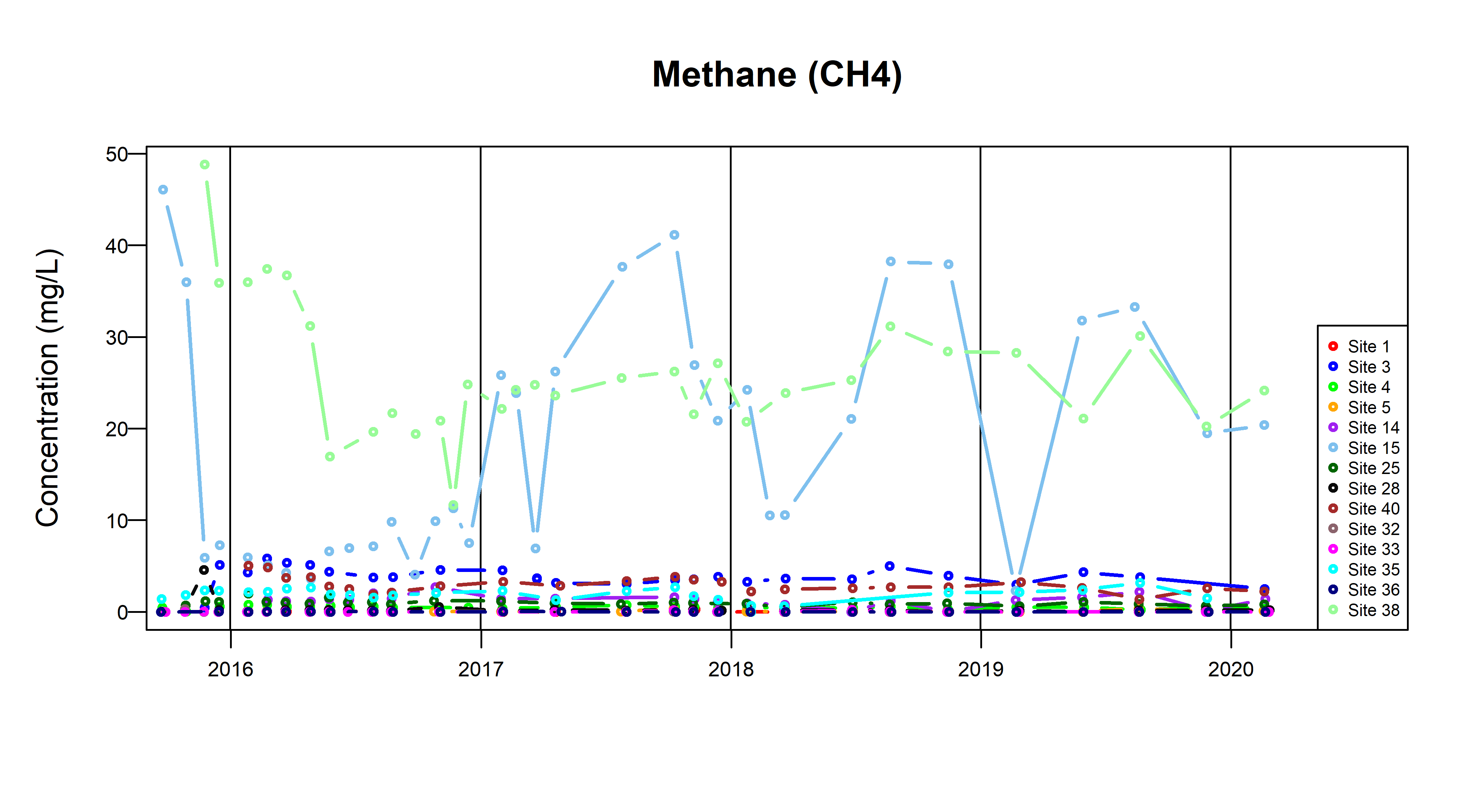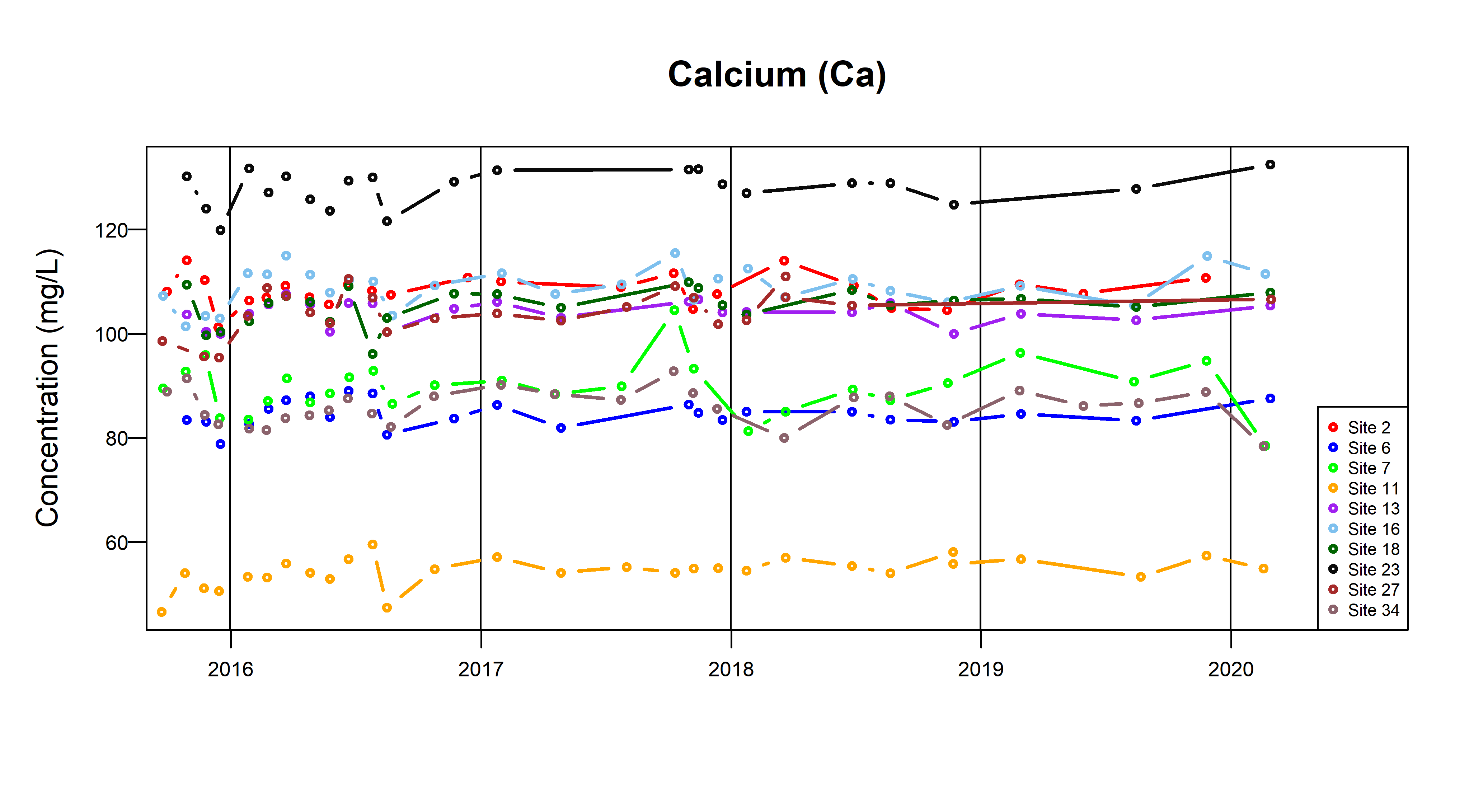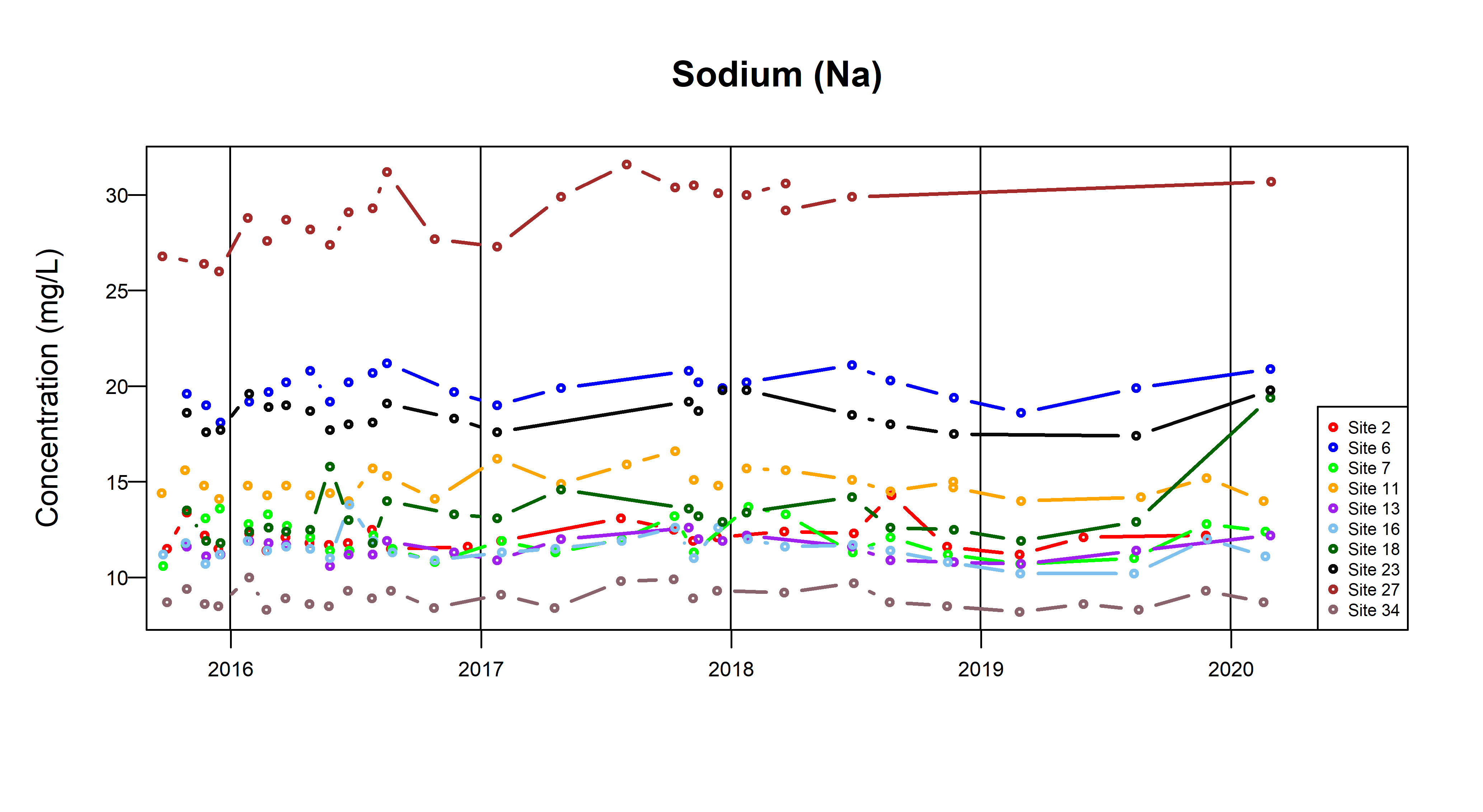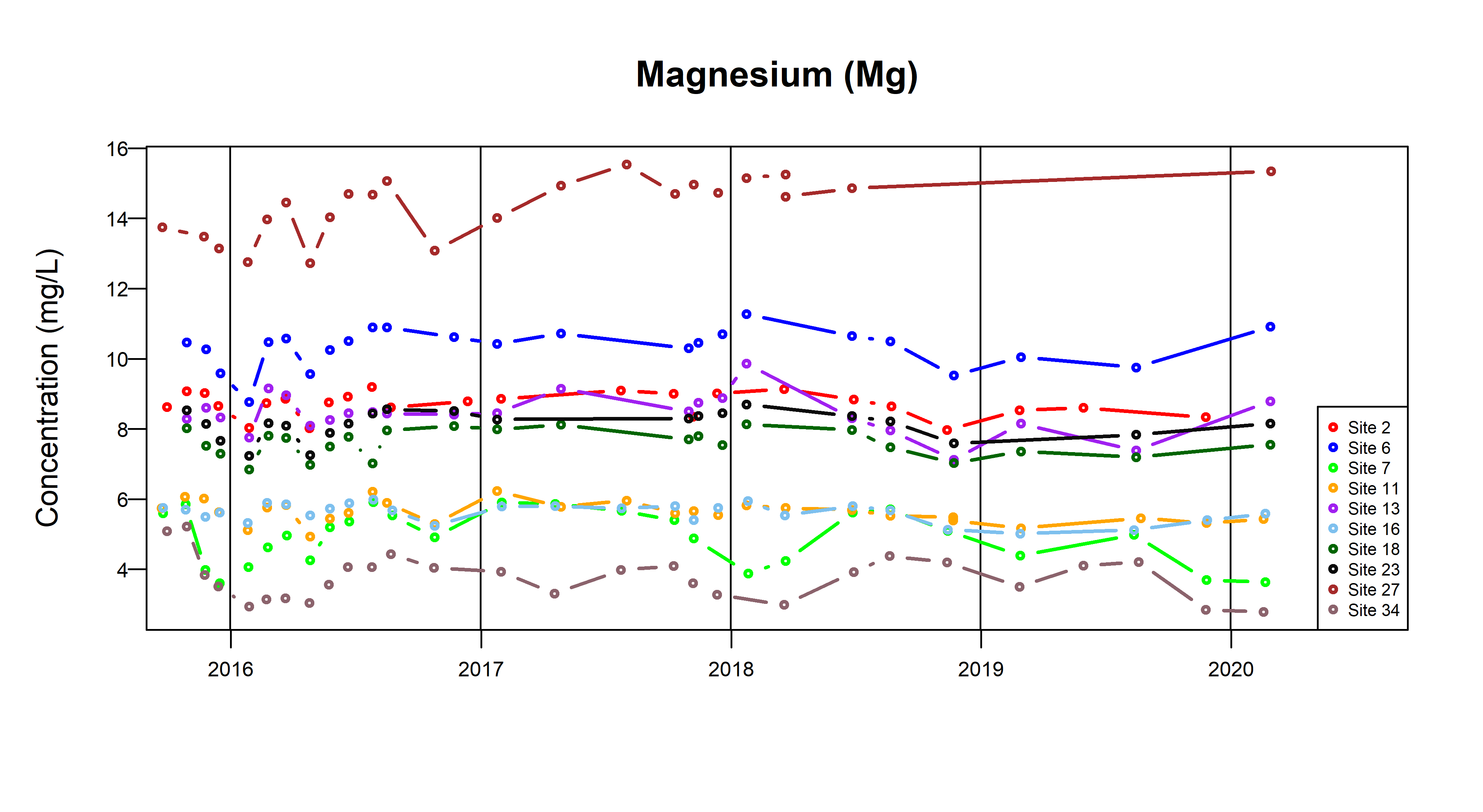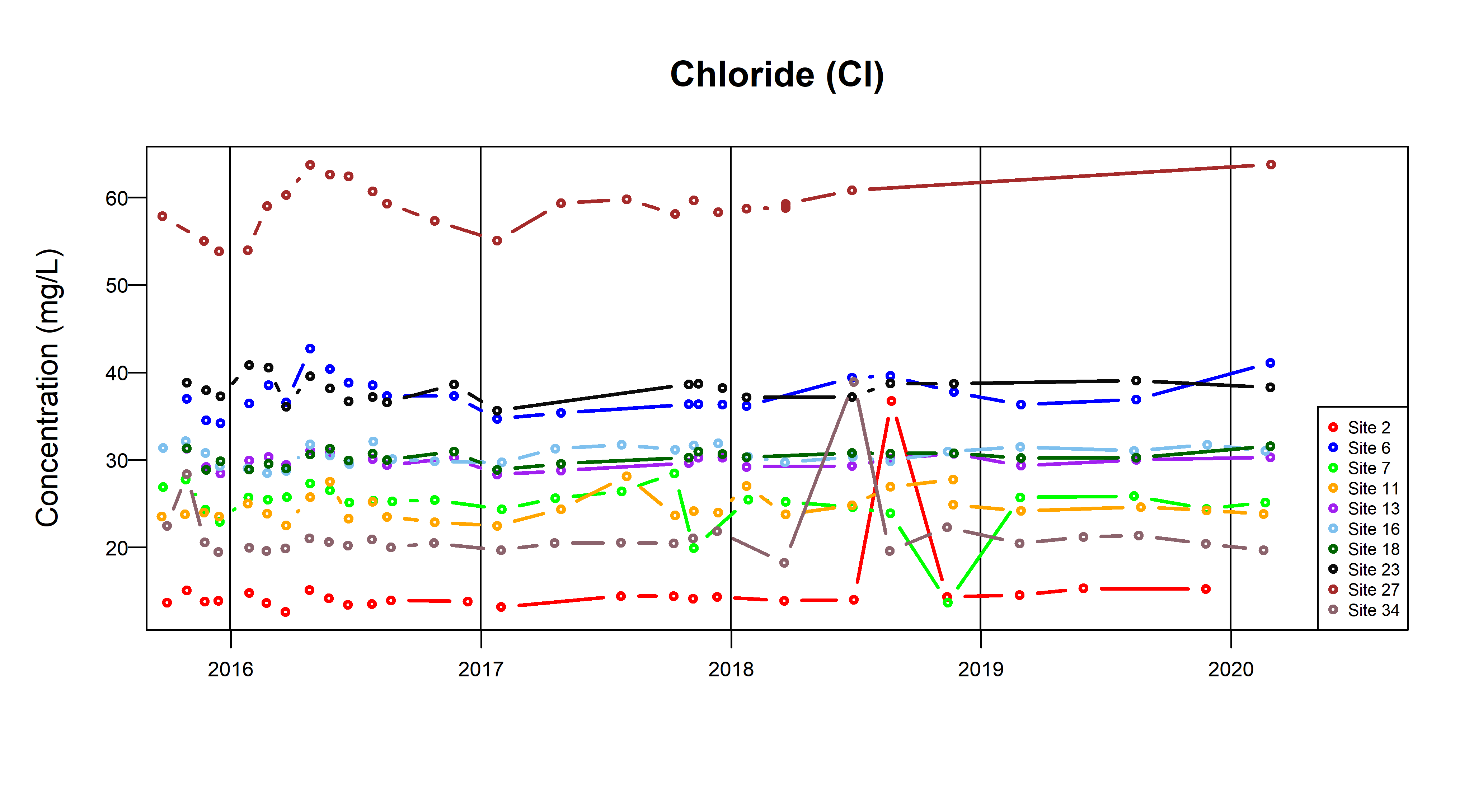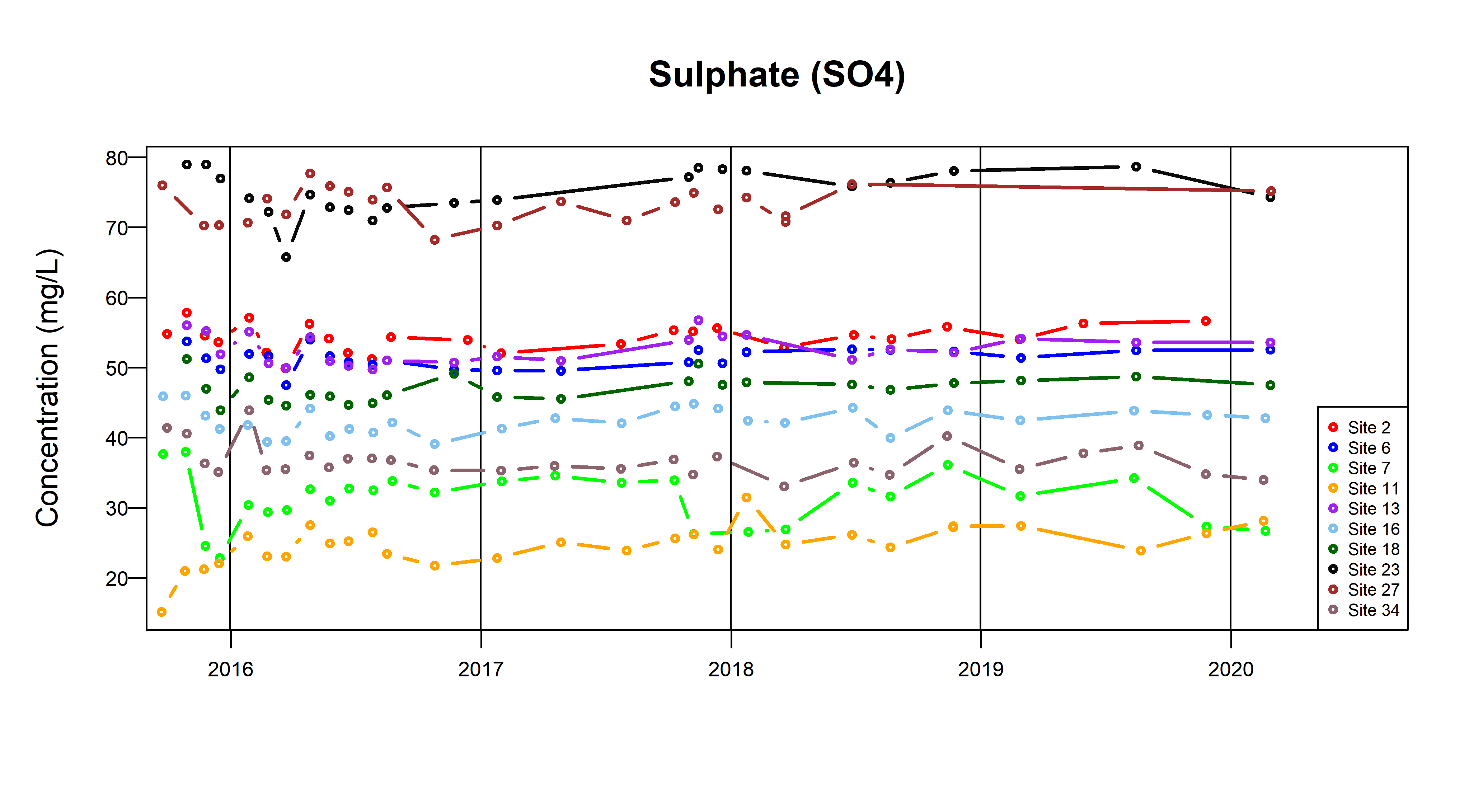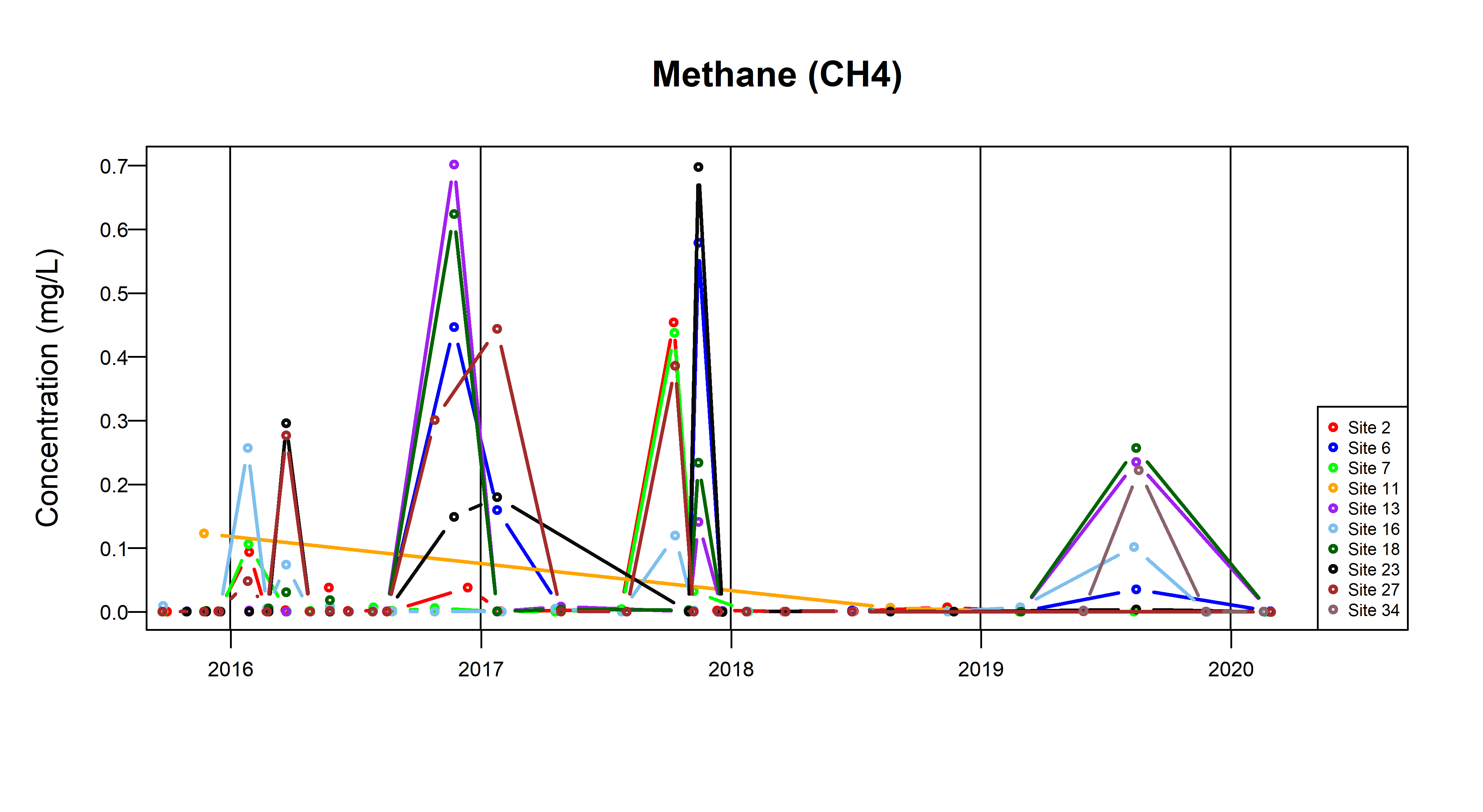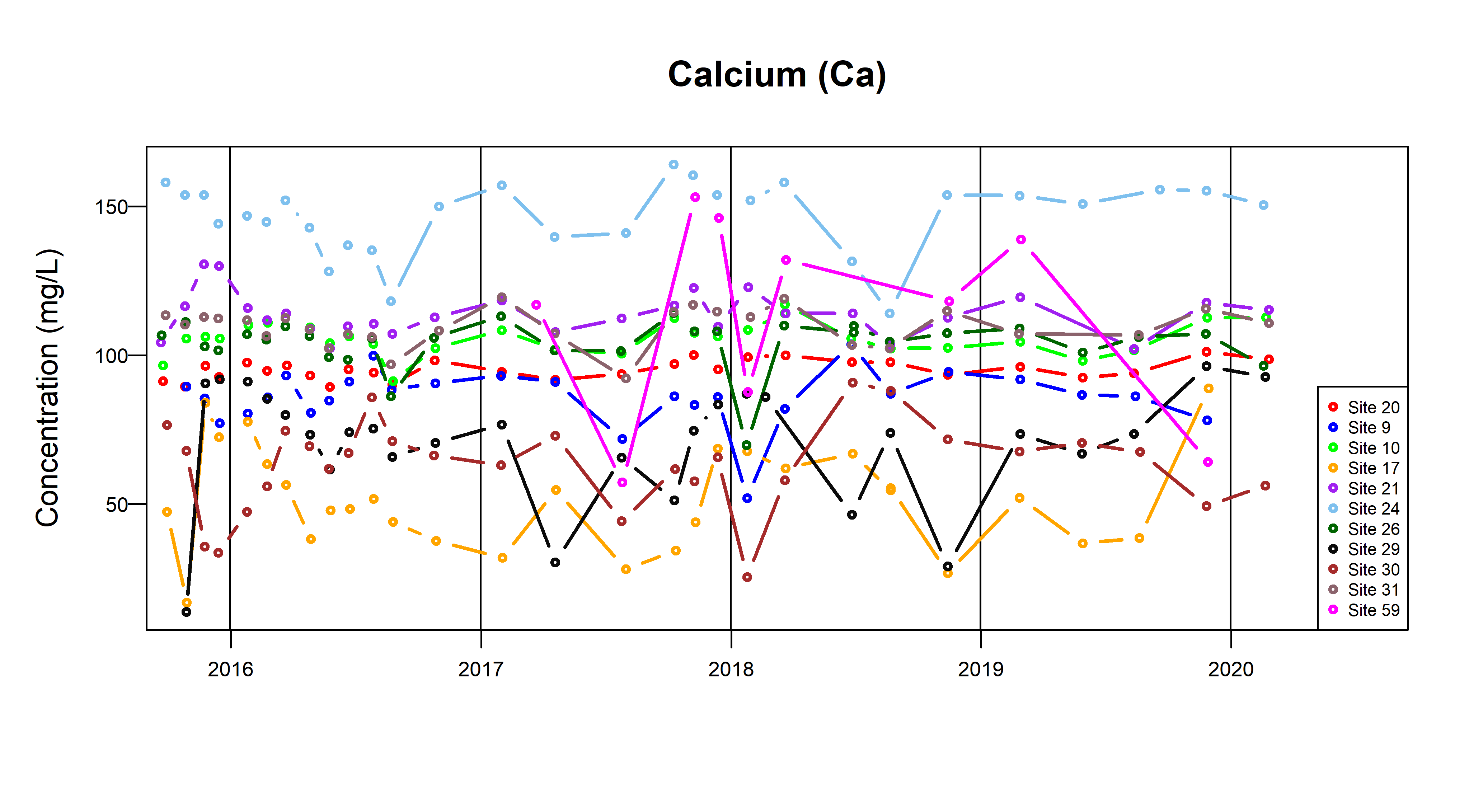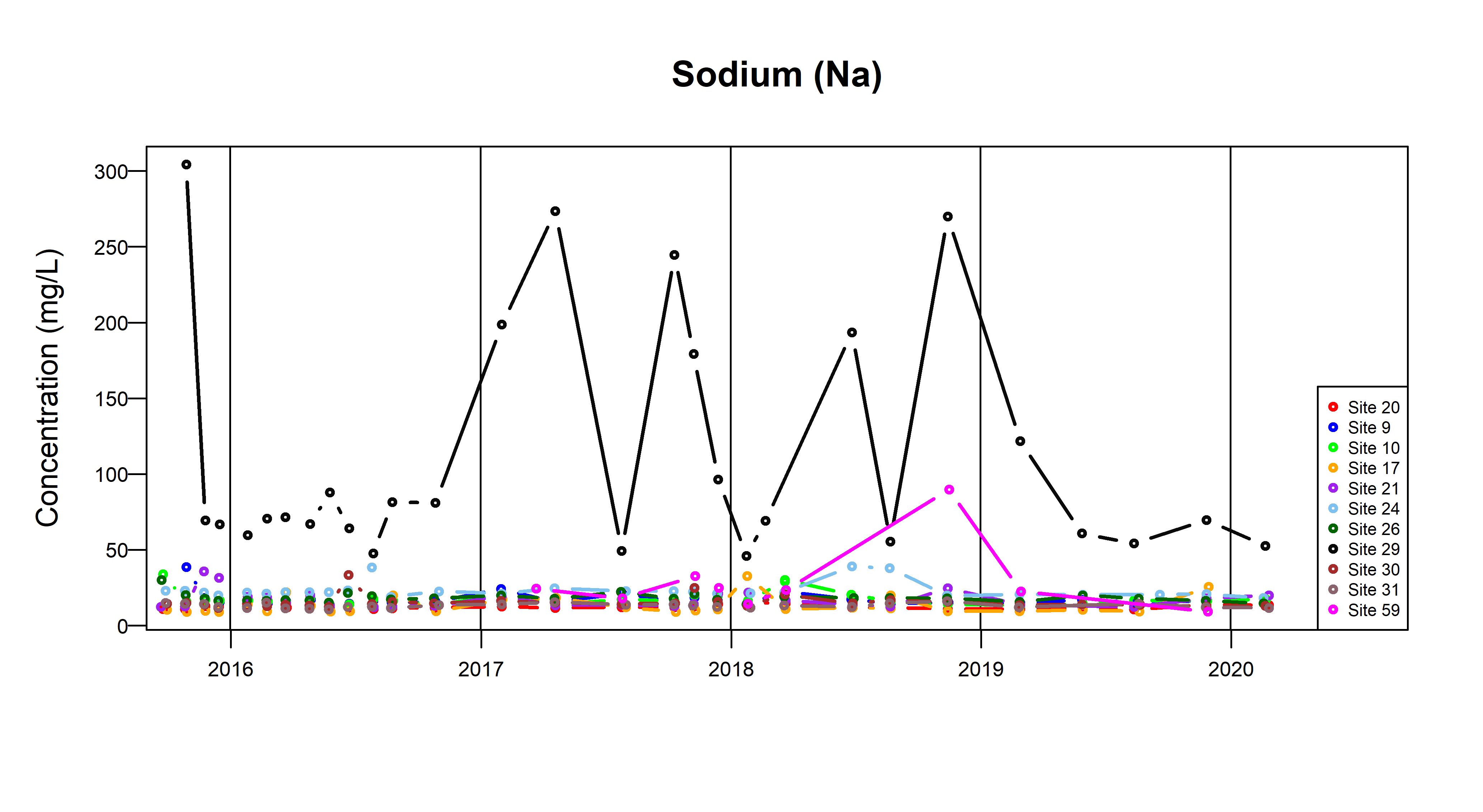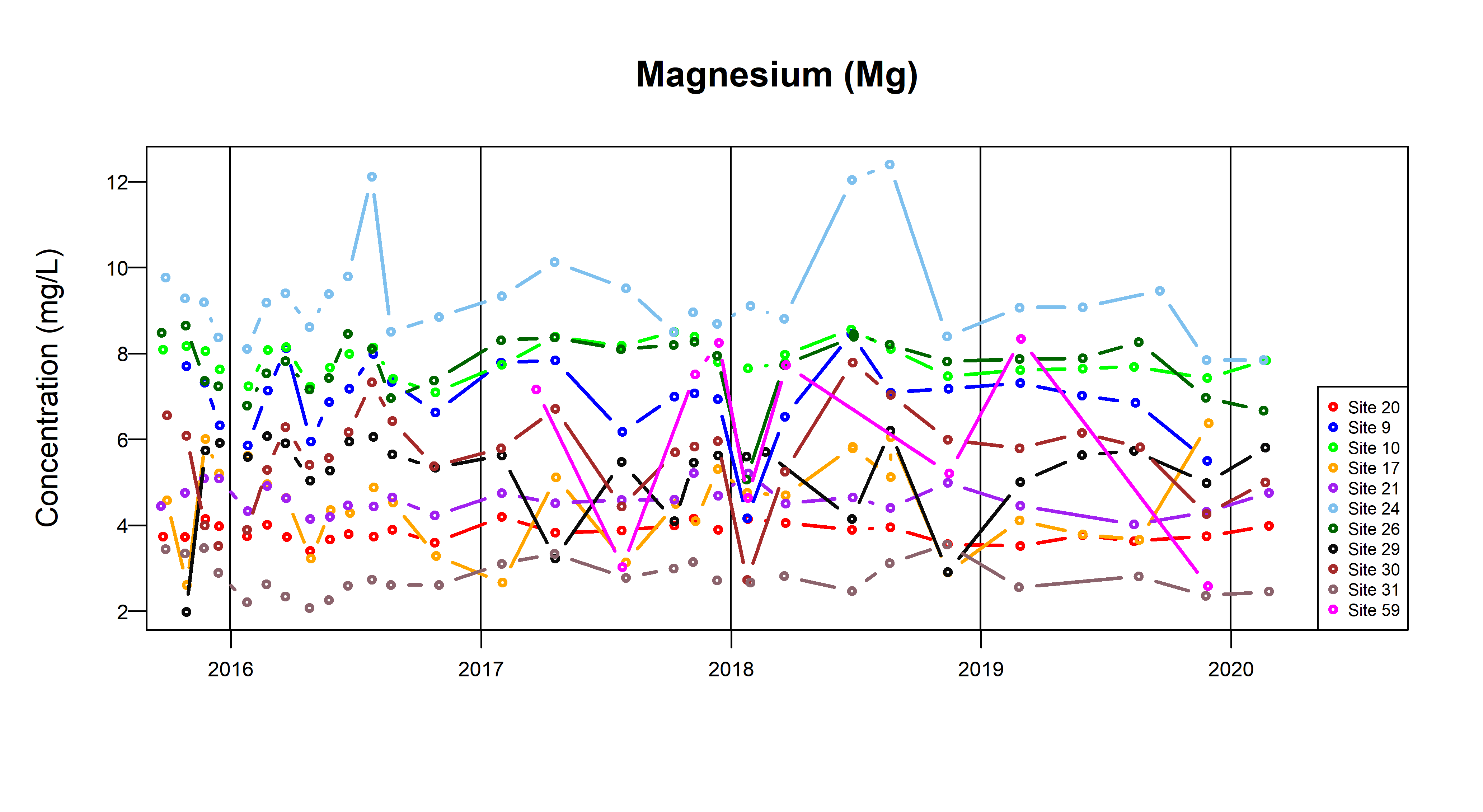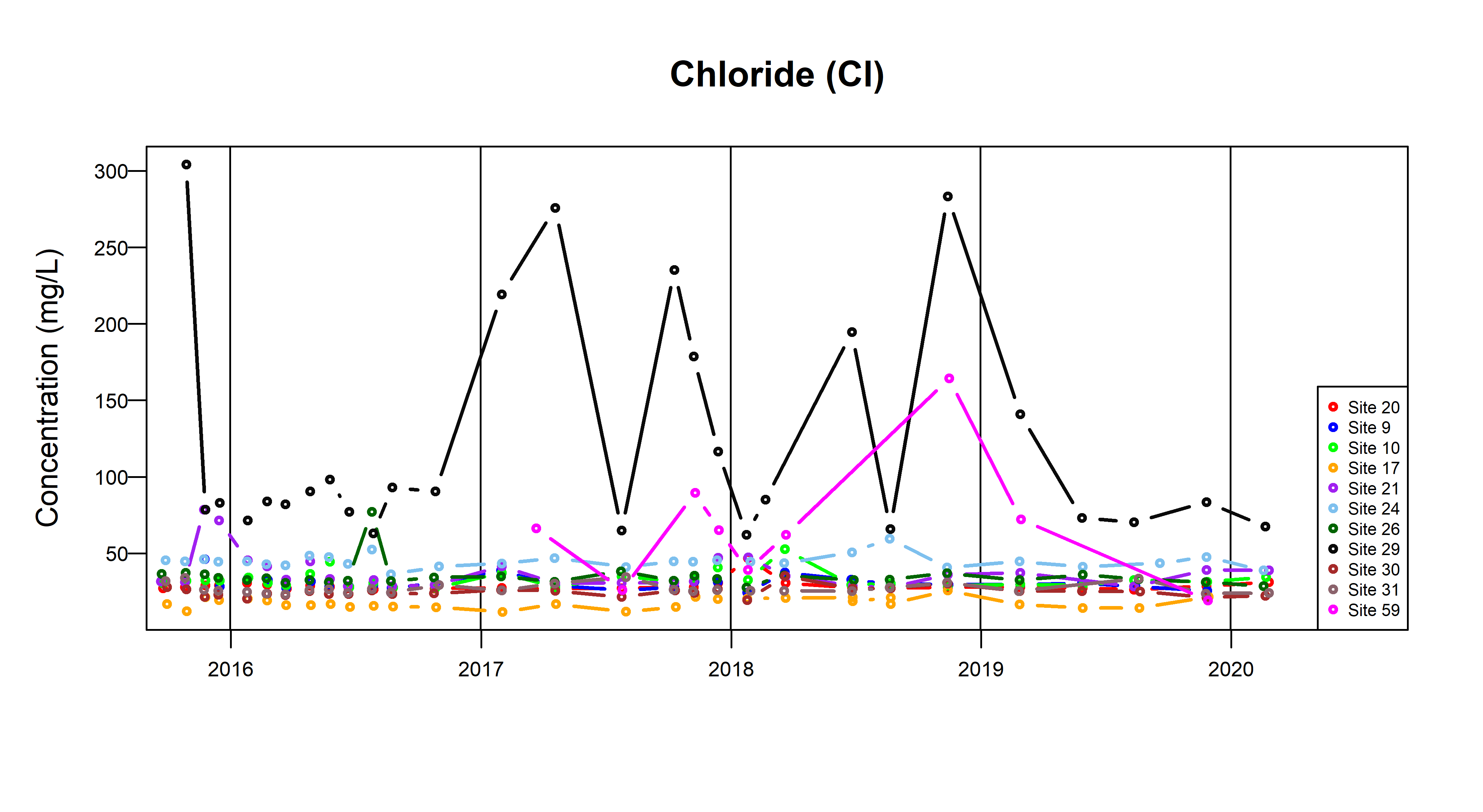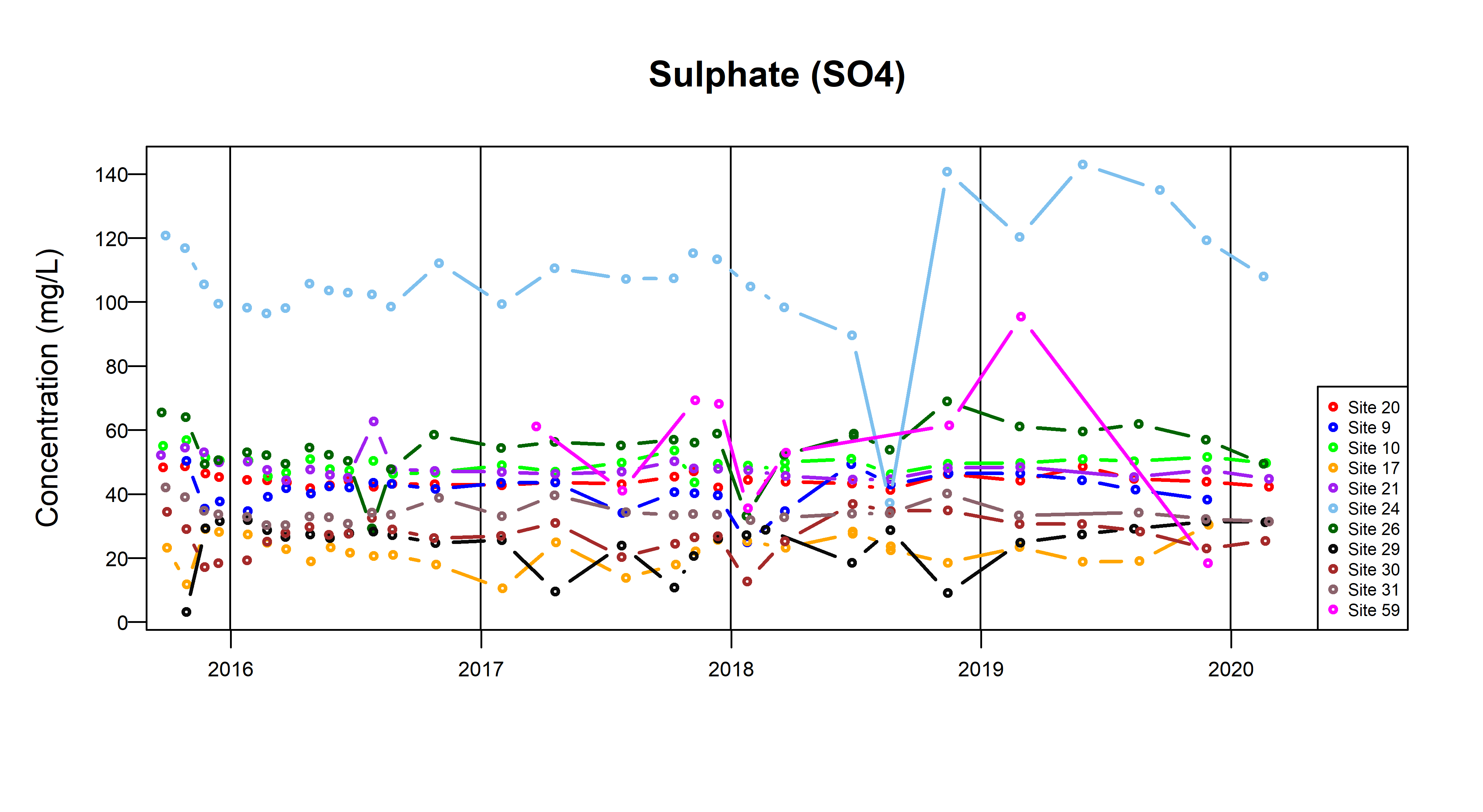Water-quality results
Summary data
Results from the eleventh round of water sampling (July 2016) are shown as examples of water quality in the figures. Summary data for inorganic constituents (major ions, selected minor constituents) are given for groundwater samples from the superficial aquifer (Figure 1), Corallian Limestone aquifer (Figure 2) and stream waters (Figure 3). National standards for inorganic constituents in drinking water are given for reference only (red lines) — sites are in many cases not used for drinking water; none has been sampled from a compliance point.
Results for the superficial aquifer (Figure 1) show the overwhelming anoxic nature of the groundwater, with mostly low concentrations of nitrate (NO3), some low concentrations of sulphate (SO4) and often relatively high concentrations of iron (Fe), manganese (Mn), ammonium (NH4) and occasionally arsenic (As). High concentrations of dissolved methane (CH4) are a feature of some groundwaters. Some, though not all, have relatively high salinity (total dissolved solids).
Results for the Corallian Limestone aquifer along the margins of the vale (Figure 2) show a lower overall salinity (lower concentrations of the dominant ions). Chemistry here is dominated by Ca-HCO3, as expected for a limestone groundwater. A greater proportion of the groundwaters from the Corallian Limestone aquifer is oxic, as indicated by commonly higher concentrations of NO3, as well as lower concentrations of Fe, Mn, As, NH4 and CH4.
Results for the stream waters (Figure 3) show the dominance of Ca-HCO3, the large range in concentrations of NO3 and relatively large range in NH4. Dissolved CH4 was not analysed in the stream waters but is expected to be low.
A map of CH4 distributions in the Vale of Pickering samples is given in Figure 4. This shows some high concentrations in the superficial and Corallian Limestone aquifers, in the central part of the vale. There is no evidence that this distribution relates to modern infrastructure (gas mains, boreholes). Concentrations of dissolved CH4 are low in groundwater from the Corallian Limestone aquifer on the periphery of the vale.
A map of sodium (Na) distributions in the Vale of Pickering samples is given in Figure 5. This shows the highest concentrations in the superficial aquifer caused by groundwater interactions with clay minerals. Concentrations of dissolved Na are mostly low in groundwater from the Corallian Limestone aquifer. The exception to this is the high value found in the confined Corallian Limestone aquifer sampled in the centre of the vale, where the Corallian rocks are deep. Deep groundwaters tend to be old, and have been in contact with rocks over long periods of time giving them high concentrations of dissolved constituents such as Na.
Summary results for detected organic compounds in the groundwater samples (superficial and Corallian Limestone aquifers together, September 2015) are given in Figure 6a. Data show detection of a large number of compounds though usually with few occurrences of each. Detected compounds include pesticides, polycyclic aromatic hydrocarbons, plasticisers and pharmaceuticals, in all cases at concentrations of less than 1 µg/L, but lower by more than an order of magnitude in most cases.
Summary results for detected compounds in stream water samples (Figure 6b) show the presence of a smaller number of compounds, albeit with more frequent occurrences (note: only three samples analysed). Compounds include pesticides, pharmaceuticals and polycyclic aromatic hydrocarbons, though are in many cases different from those detected in the groundwaters. Again, concentrations of all are less than, or much less than, 1 μg/L.
Water monitoring
Monitoring data for the groundwater (superficial and Corallian Limestone) and stream sites for selected analytes are shown in Figures 7 to 9. These show the temporal variability in concentrations over the period of monitoring (from September 2015).
Contact
Contact BGS enquiries for further information.


